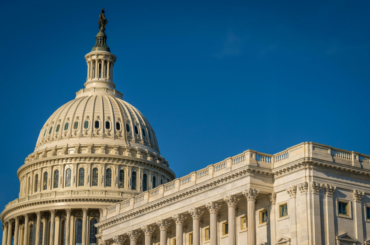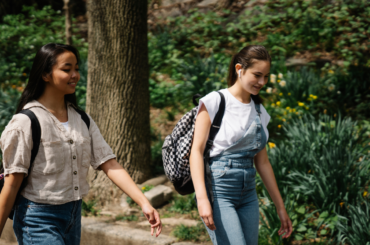You’ve probably heard someone say “I don’t see skin color” or “I don’t see race.” While that sentiment—sometimes referred to as “color blindness”—is usually well-intentioned, it actually doesn’t help in the struggle for racial justice. In fact, it works against positive change because it’s a way of staying silent about injustices. If we claim not to be able to see differences, how will we be able to see when people are being treated unfairly because of those differences—and then take action to fix it?
Here’s an explainer for parents who may have been tempted to brush past issues of race by saying things like “we’re all the same,” or “my kids don’t see color,” or “we don’t care about so-and-so’s race.” Each section includes a suggested script for explaining to kids why “not seeing race” is not a helpful approach.
Kids (even babies) already do notice racial differences
We like to think of kids as innocent and therefore incapable of having racial bias. But studies have shown that by six months old, babies are aware of racial differences. And by three to five years old, researchers say, kids not only categorize people by race, but express bias based on race.
What to say to kids:
“We do notice when people look or seem different from ourselves or different from the people we’re used to seeing every day. And there’s nothing wrong with noticing, and talking about what we notice. It’s even natural for us to try to put people into categories in our heads. That’s not the same as being racist.”
It’s often a backhanded compliment from white people
Often when people of color receive a comment like, “Oh, I never even noticed your race,” it feels more like an insult than a compliment. The meaning behind such a statement is that there must be something wrong with being noticeably brown or different from the majority, and that it is best to blend in as a white-presenting person. People who use these types of statements may not realize it, but they’re perpetuating a dynamic where diversity is such an unpleasant topic that it can’t be talked about openly.
It also implies that the unique viewpoints and experiences that come from people’s differences aren’t important, or are too insignificant to be noticeable. “Those who claim that they ‘don’t see colour’ … don’t actually see us,” wrote Ijeoma Oluo, the author of the highly acclaimed book So You Want to Talk About Race, in Today’s Parent. “Because we are people of colour—people of many colours—with our own diversity, culture, history, beauty, and, yes, struggles. To ‘not see colour’ is to not see us at all.”
What to say to kids:
“There’s nothing wrong with saying ‘Black’ when talking about a Black person. When non-Black people avoid the word, it sounds like they think there is something wrong with being Black. Black, Indigenous, and people of color have important experiences and we should listen to those instead of telling them they don’t exist.”
It’s not just about “seeing color” anyway
The way people perceive race (and the way they think about their own racial identity) is not only about the actual color of someone’s skin. It’s also about cultural markers, upbringing, and lots of other physical features besides skin. Race is more of a social category (one made up by people) than a biological one.
In fact, you don’t even have to have a sense of sight to have racial bias. Osagie Obasogie, Ph.D., a bioethics professor at the University of California, Berkeley, and author of the book Blinded by Sight: Seeing Race in the Eyes of the Blind, shared with NPR, “Blind people aren’t any more or less racist than anyone else. … Vision has very little to do with it. What matters are the social practices that train us to see and experience race in certain ways, regardless of whether we are sighted or not.”
What to say to kids:
“Race is not just about skin color, and your race isn’t a scientific fact either. It’s a messy category based on a lot of things like your skin tone, facial features, hair texture and color, body shape, culture (like language, food, religion, names, clothing, etc.), and how others see you. But race has become such an important category in our society that we all have some kind of racial bias (associations you make about a person based on their race without even thinking about it)—even people who are blind and don’t see skin colors.”
It’s important to talk about differences to understand them
“One of the most effective ways to fight implicit racial bias in young children is to not only allow them to see colour, but to also deliberately show them more of it,” wrote Ijeoma Oluo. So rather than silence, avoidance, or shame about racial differences, children need to hear about differences in various positive ways.
Oluo cited a study in which Chinese preschoolers who had exhibited an anti-Black bias were shown more Black faces, and taught how to distinguish between various Black faces. They learned about details like varying skin tones and facial features, so that they could recognize individual faces. After these lessons, the anti-Black bias in these preschoolers decreased significantly.
What to say to kids:
“Sometimes people of other races beyond our own family members (or neighbors, classmates, etc.) might be unfamiliar to us. But the more we learn about and pay attention to people we’re not used to, the more likely we’ll be to treat people of other races just like regular people—because that’s what they are!”
Talking about racism helps combat racism
Exposing kids to different kinds of people and talking about differences in a positive light are both important steps—especially for the youngest kids. But the other missing piece of the puzzle is discussing injustices. Research has shown that teaching kids about racism can help counteract racism.
According to one study, white elementary school children who learned a history lesson that included a discussion about racism had more positive views of African Americans afterwards, when compared to those who had the same history lesson but without any mention of racism. And according to other studies, teaching Black children about racism can help reduce the psychological harm of racism that they encounter in life.
What to say to kids:
“Black, Indigenous, and people of color have been treated unfairly for a lot of our country’s history. That’s because white people thought they deserved to have control over everyone else. Some of these unfair things are still happening today based on race, and that’s what we call ‘racism.’ The more we learn about this the more we’ll be able to be kinder to others and help correct those mistakes. Let’s learn together so that we can do more to make our community and our country better!”







